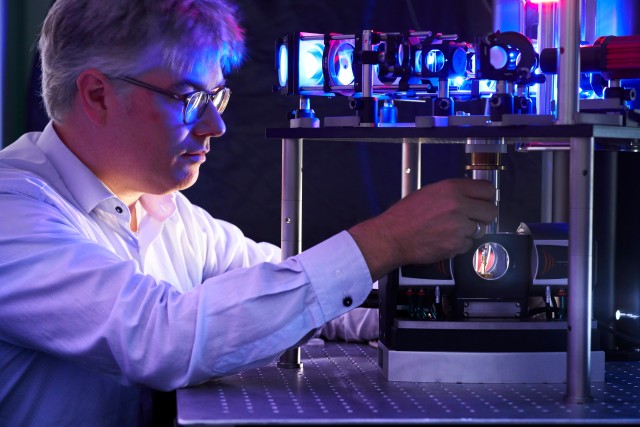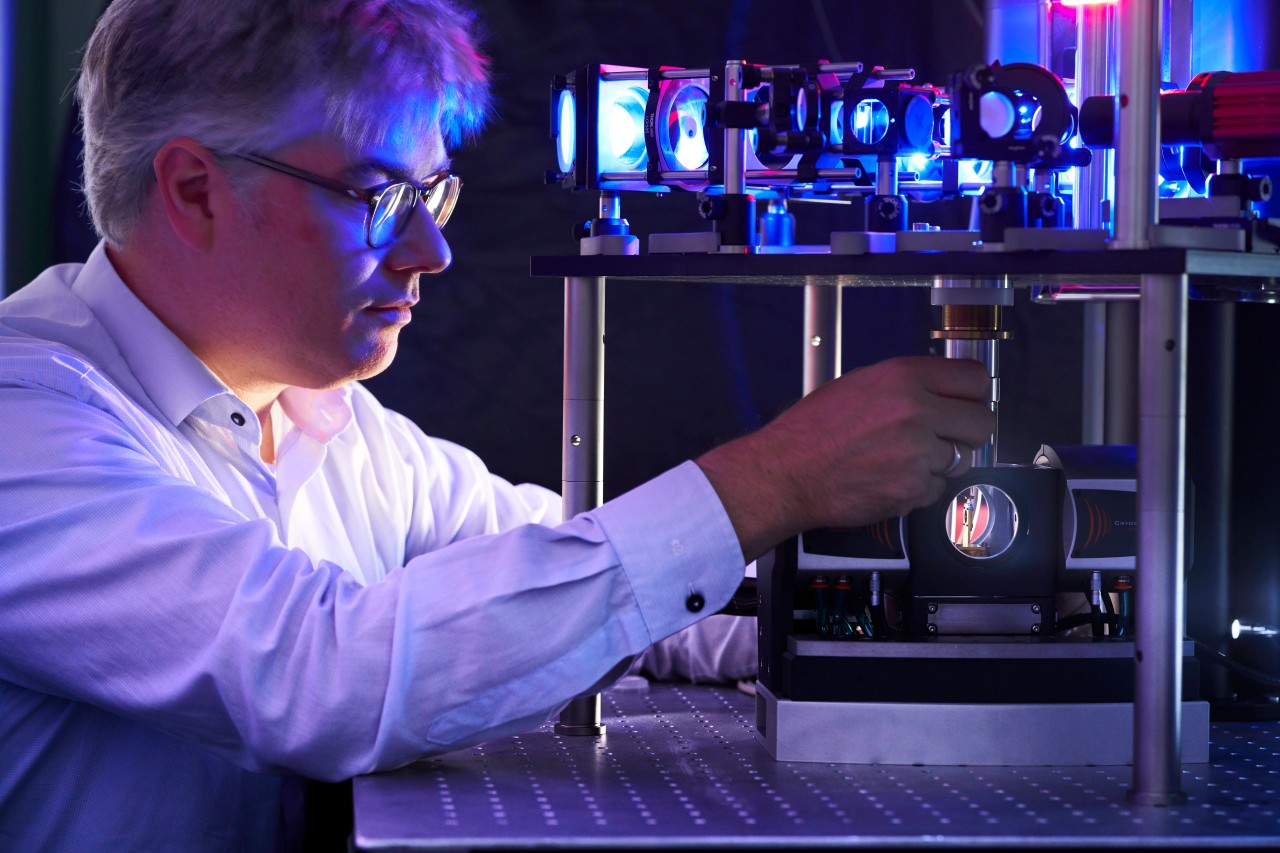16 December 2024
Recognition for many years of excellence in research and teaching
The Technical University of Munich (TUM) has appointed Dr. habil. Hans Hübl as an Adjunct Professor in recognition of his excellent contributions to both research and teaching. Hans Hübl is a research group leader at the Walther-Meißner-Institute (WMI) of the Bavarian Academy of Sciences and Humanities (BAdW) since 2009 and a lecturer at the Technical University of Munich (TUM) since 2014. As a member of the excellence cluster Munich Center for Quantum Science and Technology (MCQST) and the Munich Quantum Valley (MQV), he makes key contributions to the successful research and teaching program in quantum science and technology.
 © MCQST / J. Greune
© MCQST / J. Greune A particular strength of Hans Hübl is fostering collaborations in coordinated research programs. He has been one of the key figures in several coordinated research programs in the greater Munich area for many years. From 2010 to 2015, he was Principal Investigator in the Collaborative Research Center 631 (Solid-state Based Quantum Information Processing), from 2013 to 2018 he was a member of the Cluster of Excellence “Nanosystems Initiative Munich (NIM)” and from 2019 Core PI of the Cluster of Excellence “Munich Center for Quantum Science and Technology (MCQST)”. He was also Principal Investigator of the DFG Priority Program “New Frontiers in Sensitivity for EPR Spectroscopy: From Biological Cells to Nano Materials (SPP 1601, 2015-2019)” and was or still is Principal Investigator in numerous EU research projects (e.g. in the collaborative projects (i) “Magnetomechanical Platforms for Quantum Experiments and Quantum Enabled Sensing Technologies (MaQSens, 2017-2022)”, (ii) “Exploring Nonclassical States of Center-of-Mass Mechanical Motion with Superconducting Magneto- and Levitomechanics (SuperMeQ, 2022-2026)”, (iii) “Open Superconducting Quantum Computers (OpenSuperQPlus, 2023-2027)”) and BMBF collaborative projects (e.g. QuaMToMe). Finally, it should not go unmentioned that Hans Hübl is a central pillar of the Munich Quantum Valley (MQV) and PI at the newly approved DFG Collaborative Research Center/Transregio TRR 360 “Constrained Quantum Matter”, which started in October 2023.
Key scientific achievements
For many years, Hans Hübl is considered a leading international expert in two particular subfields: (i) spin dynamics and quantum magnonics and (ii) hybrid quantum systems. He has contributed to both fields with fundamental publications and pioneering work. With the first proof of strong coherent photon-magnon coupling (Phys. Rev. Lett. 111, 127003 (2013)), he established the new field of “cavity quantum magnonics”. Together with his colleagues at UNSW, he demonstrated the efficient readout of spin qubits for the first time (Nature 467, 687 (2010)). Moreover, in fundamental work on circuit quantum electrodynamics, ultra-strong coupling was demonstrated for the first time (Nature Physics 6, 772 (2010)). Equally important is the work on the first demonstration of the spin-Nernst effect (Nature Materials 16, 977-981 (2017)), the generation of slow light in nanoelectromechanical circuits (Nature Physics 9, 179 (2013)), the observation of multiple spin echoes in electron spin resonance (Phys. Rev. Lett. 125, 137701 (2020)) or on the detection of the Hanle effect in antiferromagnets (Phys. Rev. Lett. 130, 216703 (2023)).
About TUM Adjunct Professors
At the Technical University of Munich (TUM), research staff members with a habilitation degree can be appointed as an “Adjunct Professor” if they have made excellent contributions to their field of research and demonstrated convincing performance in teaching over several years. The appointment procedure for adjunct professors is similar to that for associate professors. It is based on an international best practice and relies on international peer evaluation. It requires excellent performance in research, particularly regarding quantity, quality, and impact of research accomplishments and the academic standing in the discipline in relation to contemporaries.
Contact
Prof. Dr. Hans Hübl, Prof. Dr. Rudolf Gross
Walther-Meißner-Institut
Bayerische Akademie der Wissenschaften & Technische Universität München
Walther-Meißner-Straße 8,
D-85748 Garching
